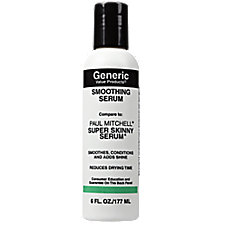
Elasticity is a very important factor in assessing the strength of hair. The elasticity of the hair is an indicator of what styles and/or processes your hair can withstand. When hair has low elasticity, it will not hold a curl well (thermal or wet styled) and it is more prone to damage caused by styling and chemical treatments. Basically, hair with low elasticity is weak and must be handled with care.
Chemical treatments including relaxers, permanent wave, color and even keratin should be preceded by an elasticity strand test to ensure minimal (ideally zero) breakage occurs. But you should also consider performing an elasticity test before going to wacky with the hooded dryer, blow dryer, round brush and flat iron because this requires good elasticity, too. One way to test your hair's elasticity is to take a [full length] strand of hair from your comb or brush. Hold the strand with the index finger and thumb of both hands about 2 inches apart. Quickly and firmly pull the strand of hair. If the strand snaps, it has low elasticity; If it remains in tack, it has good elasticity.
Another strand test that is equally as fun is what I call the "ribbon curl" test. Hold a strand of hair between the index finger and thumb of one hand. With the index finger and thumb of the opposite hand, use your thumb nail to firmly run along the length of the strand so that it curls. -- This is similar to curling a ribbon with scissors. -- Now stretch the curl until the strand is straight then let it go. If the strand returns to the original curl pattern, it has good elasticity. If it returns to at least half the original curl, it has moderate elasticity. If it stays straight, your hair is in bad shape :(.
Many factors affect the elasticity of the hair. Excessive heat styling, combing/brushing when the hair is wet and chemical treatments can all have a devastating effect on your hair's level of elasticity. If after performing the strand test you find that your hair has low elasticity, avoid all of the above styling faux pas. Hair elasticity can be improved by giving your hair what it lacks... PROTEIN! Hair is 100% protein (keratin). Hair with low elasticity has weaker protein bonds than that of good elasticity. Nevertheless protein treatments are a good idea for everyone sooooo... Run, run, run to your nearest beauty supply to purchase a deep conditioning protein treatment.
Here's to the Glam Life!

























